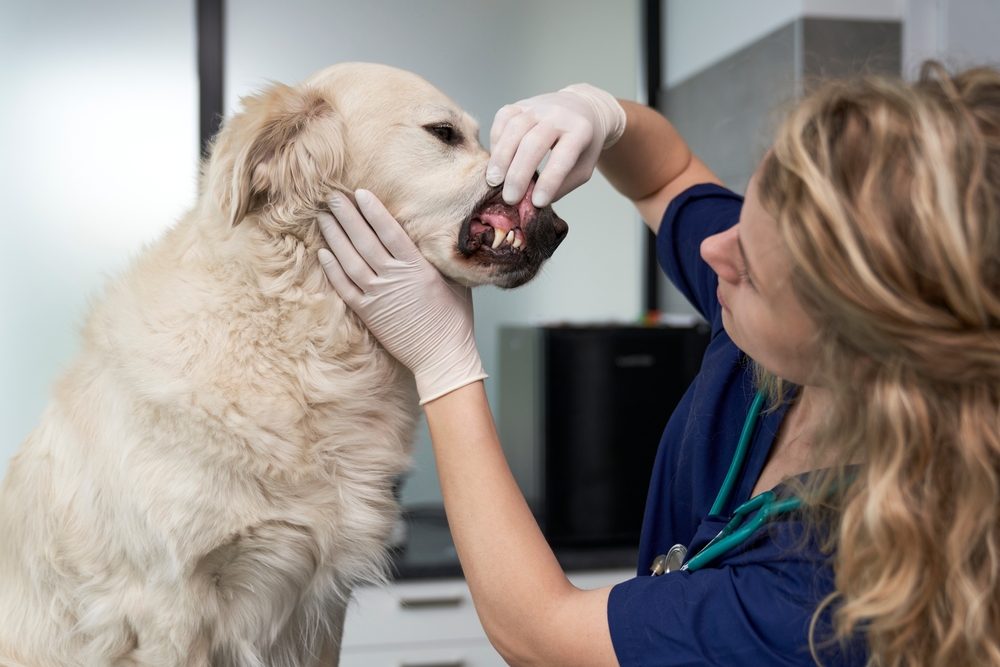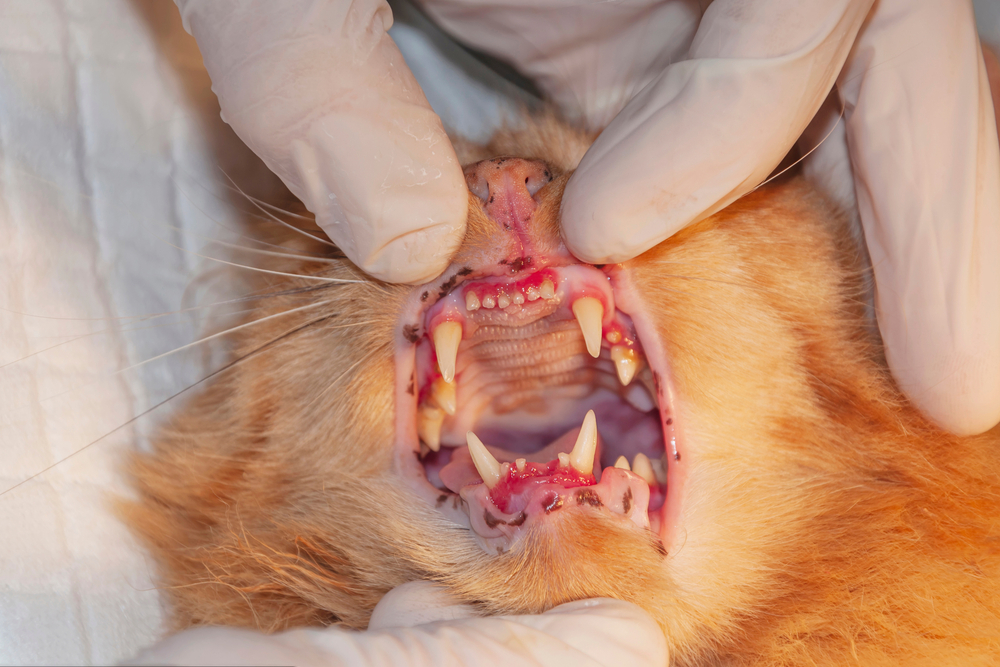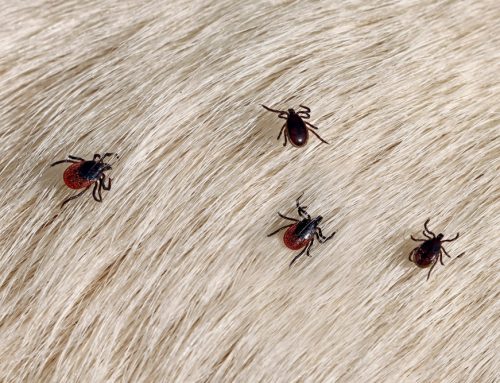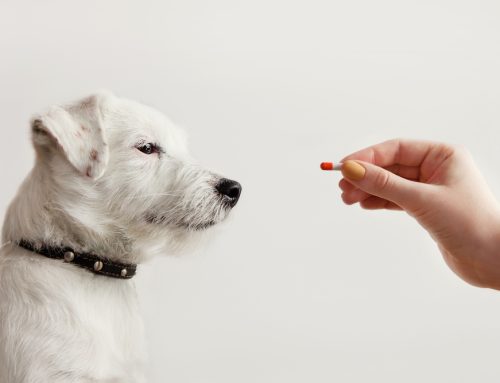Periodontal (i.e., dental) disease is one of the most common health issues in veterinary medicine, but the condition is often only identified in its advanced stages. Periodontal disease generally affects the teeth and surrounding areas (i.e., gums, mouth, jaw) by causing gum swelling, tooth root infections, and tooth loss. The condition can also lead to swelling under your pet’s eyes and more serious problems that impact the kidneys, heart, and liver.
The most effective way to help ensure your pet avoids dental problems is through regular professional dental cleanings and veterinary visits. You should also be on the lookout for dental disease signs to help prevent issues from worsening. Learn how to improve your pet’s oral health by reading our Best Friends Veterinary Care team’s guide to periodontal disease.
Check your pet’s teeth
One of the first signs your pet has dental issues is visible plaque or tartar buildup on their teeth. Plaque is a thin yellow film, but tartar is darker and harder. While this buildup could just mean your pet is due for a cleaning, they may have periodontal disease.
In later stages, tartar buildup can lead to damaged (e.g., chipped, fractured, or broken), loose, or even missing teeth. Because your pet can’t give you a heads-up even if they are in pain, you might be unaware they have a problem until their periodontal disease is advanced. That’s why regularly checking your pet’s teeth is so important.
Check your pet’s cheeks
Dental disease can become so severe that your pet exhibits signs outside their mouth. Keep an eye on your pet’s cheek area for swelling and draining. If your pet exhibits any pain signs, particularly under the eye, you should seek veterinary care.
Check your pet’s gums
Just like people, pets can have inflamed gum tissue (i.e., gingivitis), which manifests in several ways, including gumline recession, which looks like the gumline is increasing and separating from the teeth. When this happens, the roots of your pet’s teeth become exposed and, therefore, more prone to infections and other concerns.
Gingivitis can also cause gums to appear red from the inflammation, and if left untreated for too long, can lead to bleeding and discomfort for your pet. If you notice anything unusual about your pet’s gums, visit Best Friends Veterinary Care.
Check your pet’s breath
Doggy breath could be harmless, or it could be a telltale periodontal disease sign. If your pet’s breath smells rotten or makes you gag, it’s likely more than run-of-the-mill doggy breath and should be checked out by our veterinary team.
Check your pet’s lifestyle habits
Many pets can have advanced periodontal disease and still behave normally. However, If your pet has oral health issues, they may have behavior changes and exhibit difficulty chewing or retaining food. Or, they might avoid their favorite chew toys, or hard or chewy treats they used to love. Avoiding favorites can be a sign that your pet is experiencing mouth discomfort or pain. If your pet exhibits any of these signs, consider whether they’re exhibiting any other periodontal disease signs.
Check your pet’s medical history
Many factors can impact your pet’s dental health. Our team considers your pet’s medical history when creating their dental care and treatment plan, including these factors:
- Age — Pets’ dental health is rarely prioritized from an early age, and nearly 80% of dogs and cats older than 2 years have some form of dental disease. Is your pet due for some oral care and maintenance?
- Breed and size — Certain breeds are predisposed to dental issues. Small breeds have a high periodontal disease risk because they have a delicate bone structure and little room in their mouth. To determine whether your pet is susceptible to dental disease, check with our Best Friends Veterinary Care team and we’ll customize your pet’s dental care and treatment plan.
- Lifestyle and health — Lifestyle, diet, and general well-being are all factors in your pet’s dental health. If your pet has a poor diet or tends to chew anything and everything, they’re prone to periodontal disease.
- Dental hygiene — If your pet is older than 2 years of age and has never had a professional dental cleaning, schedule their dental checkup with our team.
Setting expectations for your pet’s oral health
Creating a manageable dental care plan is the first step in protecting your pet’s oral health.
To establish your pet’s dental hygiene routine at home, follow these tips:
- Brush your pet’s teeth regularly — Strive to brush your pet’s teeth daily. Use a small toothbrush and pet-friendly toothpaste to maintain your pet’s teeth.
- Introduce dental chews — Dental-specific treats contain enzymes that help dissolve and prevent plaque and tartar buildup.
- Consider water additives — If your pet is receptive, put these additives in their water bowl to help maintain good oral health and fresh breath.
Treatments

While your pet’s at-home dental care routine is imperative, scheduling regular checkups and professional dental cleanings is just as important to help prevent or detect periodontal disease. Advanced periodontal disease stages can require extractions and surgery. To help prevent your pet from needing these dental procedures, maintaining their at-home dental care routine and professional dental cleanings go a long way in helping them avoid these unfortunate outcomes.
Taking control of your pet’s dental health can be daunting, but we’re here to help. If you have noticed any of these dental disease signs in your pet, want to book a professional dental cleaning, or need help creating a manageable at-home dental care plan for your pet, call our Best Friends Veterinary Care team.








Leave A Comment